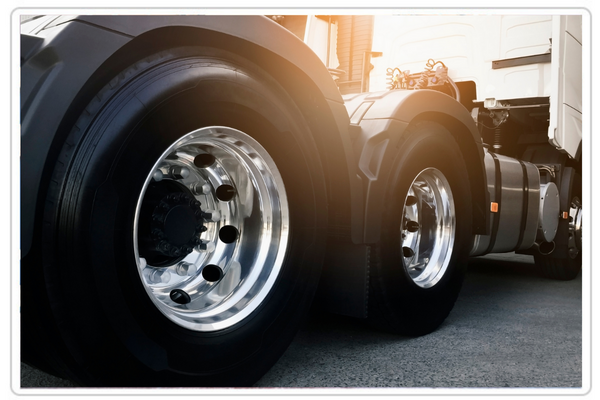How to avoid axle overload?

An improperly distributed load on a trailer can have many consequences. One of them is overloading the drive axles - which will most likely result in a financial penalty in the event of a roadside inspection or the need to reload the vehicle. In the following article, we suggest what to do to avoid this.
The penalties imposed on carriers in connection with overloading the vehicle are obviously not unfounded. An overloaded axle can be a threat to road safety, because, among other things, extends the braking distance. Therefore, such a vehicle endangers the health and life of the driver and other road users. A vehicle that is too heavy can also damage the road surface. The exception to the imposition of a penalty in such cases is the situation when the carrier has a permit to travel with an abnormal vehicle.
Why are the axes overloaded?
There can be many reasons for the incorrect distribution of loads on the trailer and, consequently, for overloaded axles. One of them may be incorrect loading planning, which does not take into account the axle load resulting from e.g. ignorance of the person responsible for loading. Another reason is often rush, e.g. during the loading of goods on the route. The additional loads may then be incorrectly distributed over the trailer. Sometimes there are also situations when the actual weight and quantity of the cargo differs from the information on the bill of lading.
Permissible axle load
According to the regulations currently in force, vehicles of approx maximum load of a single driving axle of 11.5 tonnes (Art. 41 (1)). However, sometimes we can run into restrictions on the public road, where the maximum axle load will be 10 or 8 tons. The reason for such regulation may be the technical condition of the road surface, which is not adapted to the maximum axle load, or the road or its section is located near some facilities, e.g. a kindergarten or a hospital (Art. 41 (4)).
Penalties for axle overload
The following are authorized to control compliance with the permissible load of a single driving axle:
1) inspectors of the Road Transport Inspection;
2) police officers;
3) Border Guard officers;
4) officers of the Customs and Tax Service;
5) persons acting on behalf of the road administrator, with the exception of the General Director for National Roads and Motorways;
6) communal (municipal) guards.
Currently, the following fines are imposed for exceeding the permissible load of a single drive axle:
PLN 3,000 - when the pressure of a single drive axle exceeds the permissible value by no more than 10% ,
PLN 6,000 - when the pressure of a single drive axle exceeds the permissible value by more than 10% and not more than 20% ,
PLN 10,000 - when the load of a single drive axle exceeds the permissible value by more than 20% .
In the event that the inspecting person fails to find that a non-normative vehicle is used to drive on a public road without a category V permit (Article 64d (1)).
or
PLN 12,000 - when the load of a single drive axle exceeds the permissible value by no more than 20% ,
PLN 20,000 - when the load of a single drive axle exceeds the permissible value by more than 20%
In the event that the inspecting person concludes that a non-standard vehicle is also being driven on a public road without a category V permit (Article 64d (1)).
How to avoid axle overload?
If the person responsible for loading or the driver notices during loading that the weight and quantity of the goods differ from the data on the consignment note, they have the right to refuse to transport the goods. In this way, overloading of the axles can be avoided. However, it is difficult to predict some situations. Planning the transport and distribution of goods on a vehicle is a very complex process that requires experience and knowledge of the law in a given region. However, the applications created for this purpose can help in planning the loading. In Smartload, it is possible to plan the distribution of goods on the vehicle, taking into account the axle load. The loading plan can be easily downloaded, printed or shared via a link and sent to the loader. This prevents overloading of the axles, thus avoiding penalties and ensuring road safety at the same time.
Source: https://sip.lex.pl/akty-prawne/dzu-dziennik-ustaw/drogi-publiczne-16791834
Art. 41 Movement of vehicles with a certain value of the allowable load on a single driving axle.